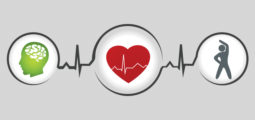MEET ARIANA
It usually creeps in silently in the middle of the night. I have become accustomed to it. Nights like these are not ordinary, for the peace snatcher is here. I have dealt with so many pains in my lifetime, and physical pain is no exception. Usually, I need to take a couple of pain medication while the cramp grew in intensity. During these battles, every area around my lower abdomen down to my feet aches and pains. I often moan in agony and seek help silently in my head as I cradle while tossing and turning until my body surrendered. During times like this, I often wonder, why me.
The first time I ever experienced this magnitude of pain was about 12 years ago, before giving birth to my daughter. It did not happen during my menstrual period, so I could not call it a period-pain. I felt this excruciating pain that felt like a hammer knocking every area of my abdomen. A year later, I got pregnant, and things became normal. I then went on contraceptives for years until I stopped. The pain that has been lurking in the dark emerged again, and this time with a vengeance. I felt its presence every month before, after and during my menstrual cycle. I knew something was wrong, and I sought to find an answer. For the past five years, I saw many doctors. I did many ultrasounds and various check-ups, and each time I get the same disappointing response, that everything is fine and that I should take pain medication.
I got my first breakthrough when an ultrasound result found a cyst and fibroids in my ovaries, but my doctor gave me a pain prescription in a rush and told me they are small, and I should not worry much. Other doctors told me the same thing and reassured me that they couldn’t do anything about it. They said the cyst would rupture and shed when my period comes, and the pain will go away right after. Sounds like a quick fix, right? Eventually, I learned to deal with the pain. I stock up on pain medications and use it as an armour each month. As it progressed, other symptoms become more pronounced.
In June of 2020, I walked again to another doctor’s office. I took another ultrasound and waited for the result. My doctor told me I have endometriosis; I was relieved. I felt that huge weight lifted off my shoulder. I can finally put a name to this oppressor. And now that we know each other well, I am ready to fight this chronic pain. Endometriosis is a painful disorder that affects 1 out of 10 women of childbearing age. Its cause is unknown. Endometriosis happened when the tissue that lines the inside of the uterus also grows outside of the uterus, in other places like the ovaries, fallopian tubes, outside walls of the uterus, the intestines and other organs of the pelvic area. Endometriosis symptoms affect women differently.
It’s most common symptoms are lower abdominal pain, painful menstrual cramps, pain or bleeding during sexual intercourse, chronic fatigue, heavy menstrual flow, back pain and infertility or difficulty getting pregnant. The psychological effect is the stress about infertility which might cause depression and anxiety.
Typically, endometriosis diagnosis requires an ultrasound examination, or a surgical procedure called laparoscopy. Doctors will find the exact location and size of the endometrial growths during a laparoscopy surgery. Laparoscopy is also a treatment method used to remove any endometrial growths, scar tissues and cysts found during the operation.
I have done many kinds of research to learn about endometriosis and am on the path to finding possible treatment for myself. During this process, my goal is to create awareness about this condition and let other women and girls know that they are not alone. Our body is our temple, and only we know when things are not as healthy as they should be. I often ponder on the thought that having a Black doctor did make a difference.
After all these years, I found the answer I have been seeking when I met a doctor who can relate to me differently. She paid attention to me. Like I am human and that my pain matters. She listened as I described my pain without rushing me out of the office. I will not dwell much here on how racism is putting Black women’s lives at risk. I will save that for another blog. There is no permanent treatment for endometriosis, and even after treatment, there is also a chance for symptoms to return. Fortunately, there are various ways to treat this condition.
Some treatment methods include the following:
-
An Anti-inflammatory drug like Advil, Ibuprofen or naproxen to help manage the pain.
-
Birth control pills to prevent ovulation and reduce menstrual flow
-
Hormone therapy to lower estrogen hormones
-
An anti-inflammatory diet
-
And, in rare cases, removal of the uterus and ovaries.
It is no secret how difficult it is to be a woman. From menstrual pains, childbirth, menopause and all the other societal responsibilities and challenges we endure. Even though we cannot avoid some of these challenges, we have to be aware of them to be able to manage or eradicate them for good. We need to tell our stories, share our pains, and make enough noise so our pains can no longer be ignored.
*Always consult your GP before starting any treatment methods*









Amazing read! It’s crazy how menstrual health is hardly talked about considering the amount of women affected and also how little is known about women’s bodies.
GOd will take control my dear,
A friend of mine had a similar experience while we were in school. Though not as severe as you’ve described it but I could tell she was always in a lot of pain throughout her cycle. We felt her cramps was just more painful that the rest of us. Thanks for sharing, now I know there’s a name for abnormal menstrual cramps.